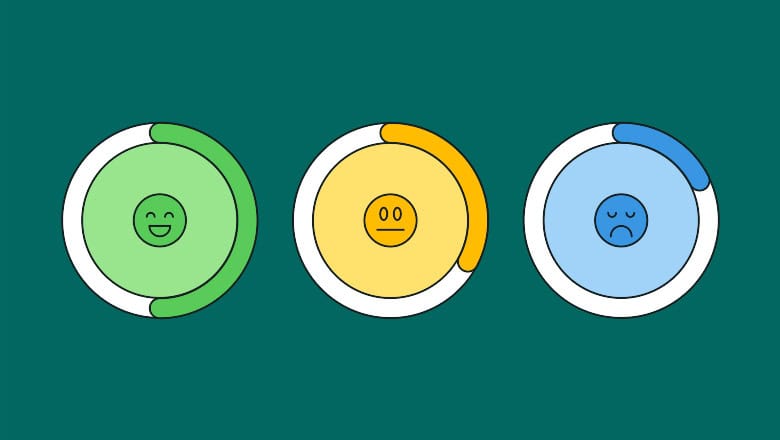In the real estate business, your website is a critical tool in converting visitors into clients. One of the most effective ways to achieve this is by using IDX (Internet Data Exchange) landing pages. These pages are designed specifically to showcase property listings, provide valuable information, and capture leads that can eventually be nurtured into clients. The goal is not only to attract potential buyers but also to keep them engaged and guide them through the home-buying journey.
Creating IDX landing pages that convert requires a combination of attractive design, useful content, and clear calls to action. In this guide, we’ll explore the best practices for building IDX landing pages that turn leads into clients.
What is an IDX Landing Page?
An IDX landing page is a web page that displays MLS (Multiple Listing Service) property data and integrates with IDX software. These pages provide potential buyers with an easy way to search for real estate listings based on their preferences, such as location, price, type of property, and other key factors. By offering MLS listings directly on your website, you can give visitors a seamless property search experience without sending them to other sites.
IDX landing pages are typically designed to capture leads, whether it’s through a search form, newsletter sign-up, or direct contact form. The goal is to turn these visitors into actual clients by providing them with valuable information and the tools they need to make an informed decision.
Why IDX Landing Pages Are Crucial for Converting Leads
- Instant Access to Listings: IDX landing pages allow potential buyers to access MLS property data in real time, which is crucial in a fast-paced real estate market.
- Lead Capture: With well-placed lead capture forms on your IDX landing pages, you can gather contact information from visitors who are interested in your listings.
- Customizable Filters: IDX landing pages let users filter listings based on their preferences, helping them find homes that match their specific criteria, which encourages engagement and increases the likelihood of conversion.
- SEO Benefits: IDX content is indexable by search engines, meaning it can help improve your site’s SEO, bringing in more organic traffic and increasing your chances of conversion.
Best Practices for Designing IDX Landing Pages that Convert

1. Create a Clean and Focused Design
The first impression visitors have of your IDX landing page is crucial. A cluttered page can overwhelm potential clients and drive them away. To create a landing page that converts, the design must be simple, focused, and easy to navigate.
- Minimalist Design: Use a minimalist design that allows the property listings to stand out. Avoid too many distractions, such as unnecessary images or text. Keep the focus on the listings and the call to action (CTA).
- Responsive Layout: Make sure your IDX landing page is mobile-friendly. With a large portion of real estate searches happening on mobile devices, your landing page must provide a smooth, user-friendly experience across all screen sizes.
- Clear, High-Quality Images: Property images should be crisp and clear, showing the best aspects of each listing. Include several photos of the property, focusing on both the interior and exterior.
2. Include Advanced Search and Filtering Options
One of the main attractions of an IDX landing page is the ability for visitors to filter listings based on their specific preferences. Having a well-designed search bar with advanced filters can significantly increase the chances of converting leads.
- Search by Location: Let users search by city, neighborhood, zip code, or even proximity to landmarks.
- Price Range Filters: Include sliders or input fields for visitors to select their preferred price range, ensuring they see listings that fit their budget.
- Property Type: Offer filters for property types like single-family homes, condos, townhouses, or commercial properties.
- Other Filters: Include additional filters like the number of bedrooms, bathrooms, square footage, and lot size to help users narrow down their search.
These search options help visitors find exactly what they’re looking for, which is critical in a competitive market where time is often of the essence.
3. Compelling Call to Action (CTA)
A well-crafted call to action is essential for converting leads on your IDX landing page. The CTA should be visible and compelling enough to encourage visitors to take the next step.
- Sign Up for Alerts: Offer a CTA that encourages users to sign up for email alerts or notifications when new properties matching their criteria are listed. This keeps potential clients engaged even after they leave the page.
- Schedule a Viewing: Include a CTA that allows users to book an in-person or virtual viewing of the property directly from the landing page. This gives them a simple way to take the next step in the buying process.
- Contact Form: Provide a contact form for visitors who are ready to inquire about a property. Ensure that the form is easy to fill out and request only essential information.
- “Save Property” Buttons: Allow visitors to save properties they are interested in so they can come back to them later. This feature is especially useful for users who are still in the research phase.
The CTA should be clear, concise, and action-oriented. Use strong action verbs like “Find Your Dream Home,” “Get More Information,” or “Book a Showing” to prompt users to take immediate action.
4. Offer Value through Content
While IDX pages are typically designed to showcase property listings, providing value-added content can further engage visitors and build trust.
- Local Market Insights: Provide local real estate market insights or trends for the area where the property is located. This helps position you as an expert and builds confidence in potential buyers.
- Real Estate Guides: Offer free downloadable resources like home-buying guides, mortgage calculators, or neighborhood reports. These can help educate your visitors and show that you’re genuinely invested in their success.
- Testimonials and Success Stories: Share client testimonials or success stories of people who have successfully purchased homes through your website. Social proof can have a significant impact on converting leads into clients.
5. Use Social Proof and Trust Signals
Building trust is a crucial step in converting leads into clients, especially in real estate, where significant financial decisions are being made. Including social proof and trust signals on your IDX landing page can help reassure potential buyers.
- Client Testimonials: Showcase reviews or testimonials from satisfied clients. Include details such as the location they bought in and how your services helped them.
- Industry Certifications: Display any industry certifications or memberships you hold, such as being a licensed real estate agent or a member of your local real estate board.
- Privacy Policy and Security Features: Display links to your privacy policy and any security certifications if you’re collecting lead information. This reassures visitors that their data is secure.
6. Optimize for SEO
IDX landing pages should be optimized for search engines to increase visibility and drive organic traffic to your site. Here are a few tips for optimizing your IDX landing pages:
- Keyword Optimization: Use relevant keywords for your area, such as city names, neighborhoods, and property types, throughout the landing page. This will help search engines understand the content and improve your ranking for related searches.
- Meta Tags and Descriptions: Include clear, concise meta tags and descriptions for each page, especially if you have multiple IDX landing pages for different regions or property types. This helps search engines understand what the page is about and improves your click-through rates.
- Image Optimization: Optimize property images for speed by compressing them without sacrificing quality. Fast loading times are essential for user experience and SEO.
7. Leverage Retargeting and Follow-Ups
Once a visitor lands on your IDX page, it’s crucial to follow up with them to keep the conversation going. One way to do this is through retargeting ads.
- Retargeting Ads: Use cookies to track visitors who interacted with your IDX landing page but didn’t convert. You can then serve targeted ads to them on social media platforms or across the web.
- Email Follow-Ups: After a visitor submits their contact information, ensure that you follow up with a personalized email. Offer additional resources, schedule a call, or invite them to take a closer look at available properties.
8. Test and Optimize Regularly
To ensure your IDX landing pages are continuously converting leads into clients, it’s important to test and optimize your landing pages regularly. A/B testing is a powerful tool that allows you to test different elements of the page, such as CTAs, images, or layout, to see which performs better.
Conclusion
IDX landing pages are a powerful tool for real estate professionals who want to convert leads into clients. By creating clean, user-friendly pages with advanced search filters, compelling CTAs, and valuable content, you can engage visitors and guide them through the home-buying process. Add trust signals, optimize for SEO, and test your pages regularly to ensure continuous improvement and higher conversion rates.
With these best practices, your IDX landing pages will become a key part of your real estate strategy, helping you build relationships with potential buyers and close more deals.













